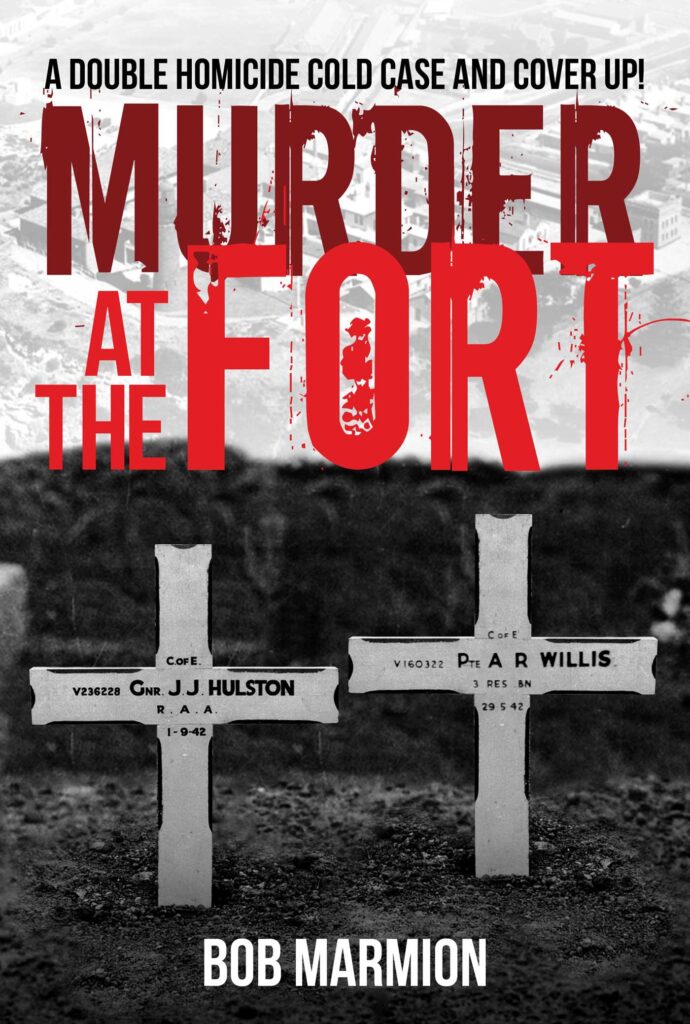
Introduction
Step back in time to the chilling atmosphere of wartime Australia in Bob Marmion’s gripping true-crime novel, Murder at the Fort. The year is 1942, and a sense of unease hangs heavy over Fort Nepean, a military base shrouded in secrecy. This historical account delves into the unsolved double homicide of two soldiers, Driver Roy Willis and Gunner John Hulston, their deaths shrouded in a web of unanswered questions and potential cover-ups.
Main Characters
- Driver Roy Willis: The first victim, a young and seemingly ordinary soldier whose brutal murder ignites the investigation.
- Gunner John Hulston: The second victim, a member of the gun crew, whose disappearance and subsequent death raise even more suspicion.
- Victoria Police Detectives: A team of experienced detectives tasked with investigating the murders. Their dedication and perseverance are tested as they tackle the complexities of a wartime case.
- Military Officials: A shadowy presence throughout the narrative, their potential involvement and reluctance to cooperate add an extra layer of intrigue.
Plot
The story unfolds with the discovery of Driver Roy Willis’ bullet-ridden body on a cold morning in May. Despite extensive inquiries by seasoned detectives, the killer remains unidentified. The mystery takes a sinister turn three months later when Gunner John Hulston vanishes while on guard duty. What follows is a series of baffling events: a search party hindered by military officials, a missing suspect, and the eventual discovery of Hulston’s body riddled with bullets.
As the investigation progresses, a multitude of questions surface. Was there a single culprit behind both murders, or were there multiple attackers? Did the wartime environment provide a breeding ground for violence and secrecy? The narrative delves into potential motives, from black market operations to personal vendettas, but the truth remains elusive.
Setting
The story is deeply entrenched in the historical context of World War II Australia. Fort Nepean, a once-proud military installation, becomes a stage for a dark secret. The wartime atmosphere intensifies the feeling of tension and mistrust, where allegiances are blurred and security concerns run high. The limitations of wartime resources and the potential clash between civilian and military authorities further complicate the investigation.
Themes
- The Unyielding Pursuit of Justice: Murder at the Fort highlights the unwavering determination of law enforcement to uncover the truth, even in the face of seemingly insurmountable obstacles. The detectives’ relentless pursuit of justice serves as a testament to the importance of accountability, especially within the confines of wartime secrecy.
- The Power of Cover-ups: The narrative exposes the potential for powerful figures to manipulate information and obstruct investigations. The suspected cover-up surrounding the murders raises questions about the extent to which wartime necessities may overshadow the pursuit of truth.
- The Scars of War: The novel portrays the lasting impact of war beyond the battlefield. The heightened sense of danger and the potential for violence cast a long shadow, even within the supposed safety of a military base.
Author’s Narrative Style
Marmion employs a clear and concise writing style, making the true-crime narrative accessible to a wide audience. The historical details are meticulously woven into the story, transporting the reader back to the wartime setting. The suspense builds gradually, with each new revelation adding another layer to the complex puzzle.
Author’s Point of View
The story unfolds from a third-person perspective, providing a comprehensive overview of the investigation and the actions of various characters. This allows readers to piece together the evidence and draw their own conclusions about the events that transpired.
Personal Reflection
Murder at the Fort is a captivating exploration of a real-life cold case. The unsolved murders raise unsettling questions about the potential for injustice, especially during wartime. The meticulously researched narrative offers a glimpse into a bygone era while reminding us of the enduring power of truth and the importance of holding those in power accountable.
The novel’s relevance extends beyond historical intrigue. It serves as a reminder that the fight for justice can be long and arduous, and the quest for truth can be clouded by secrecy and power dynamics. The story resonates with current events where whistleblowers and investigative journalists play a crucial role in exposing wrongdoing.
Conclusion
Murder at the Fort transcends the boundaries of a simple crime story. It’s a testament to the enduring human desire for truth and a chilling reminder of the lengths to which some may go to conceal it. The unsolved murders remain a chilling echo of the past, a testament to the enduring power of unresolved crimes and the unwavering pursuit of justice.


